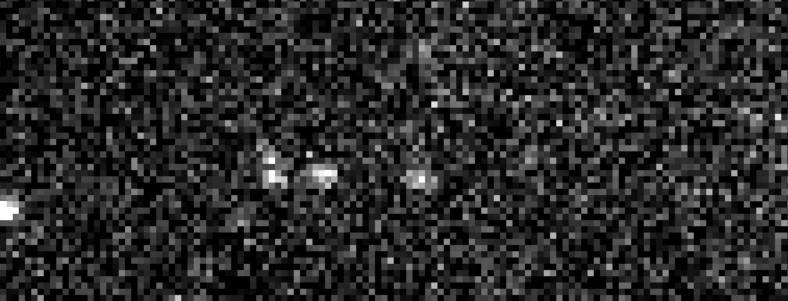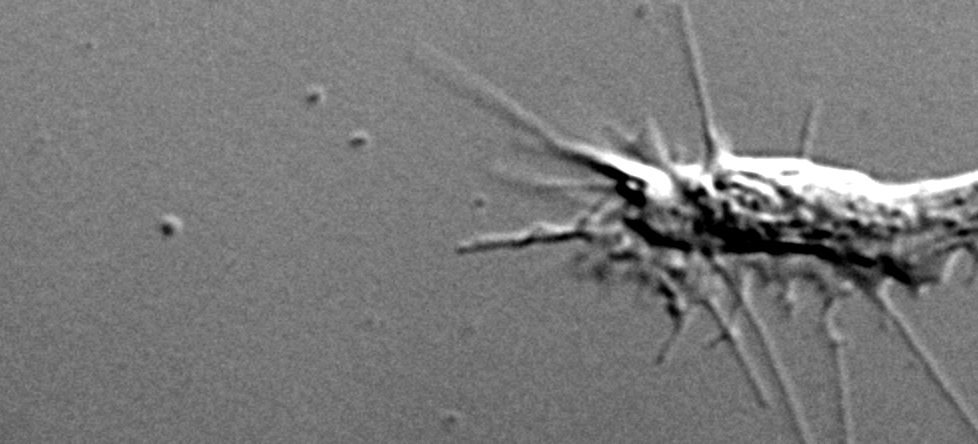Cytoskeletal proteins drive cellular motion for example during cell division, morphogenesis or intracellular transport. Ensembles of cytoskeletal proteins self-assemble to drive these processes. We are interested in the roles of the individual cooperating proteins and the principles that underpin their collective action. We use methods of physics to quantitatively describe these biological systems and predict their behavior.
Organelle transport in neurons
Trafficking of organelles, such as mitochondria, is essential for a number of biological processes, as for example maintenance of neuronal function. Numerous factors necessary for the trafficking have been identified, but how these factors cooperate to form the trafficking machinery, and to drive and regulate the transport remain largely known. We use a bottom up approach, starting from individual components of the trafficking machinery expressed as recombinant proteins and building up an increasingly complex system. We use a combination of molecular biology, biophysical and biochemical approaches to reconstitute and observe the movement of the transport complexes along microtubules in vitro, using artificial cargo as well as organelles isolated from tissues. Quantitatively correlating the composition of the complex with its function we aim to explain the molecular mechanisms underlying the organelle trafficking.
Regulation of neuronal traffic by unstructured proteins
Intrinsically disordered, microtubule-associated proteins, such as tau, are essential axonal regulators known for their roles in a number of neurodegenerative diseases. These proteins can undergo liquid-liquid phase separation, leading to the formation of droplets with regulatory functions during microtubule nucleation and growth. They also tend to phase separate during their interaction with microtubules. What are the regulatory roles of the different phases and how are they targeted to microtubules is to a large extent unclear. We form the phases in vitro to investigate their regulation of molecular motors and other microtubule-associated proteins.
Cytoskeletal mechanics of the axonal growth cone steering
Neuronal pathfinding is a foundational process during ontogenetic development. Mechanical forces driving the pathfinding are generated in the growth cone, a distinct structure at the tip of neuronal axons. The progression of the growth cone is propelled by actin dynamics, while the direction of growth is governed by microtubules, implying that crosstalk between microtubules and actin filaments is essential for the growth cone steering. Although vital, this crosstalk and its impact on the steering is not understood. We focus on the proteins that couple actin filaments and microtubules, constituting the hubs of cytoskeletal activity by coupling the driving force to directionality. We aim to provide mechanistic explanation of the actin-microtubule crosstalk enabling neuronal pathfinding.


